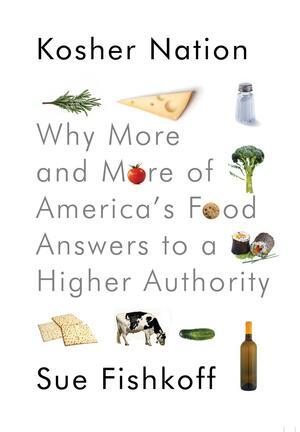From Mashgiachs to the new Jewish food movement: "Kosher Nation" by Sue Fishkoff
When you choose to purchase a jar of peanut butter with a hecksher on it or kosher chicken, you become one of the final elements in the long journey that the particular foodstuff undertook in order to be certified as kosher. It can be easy to take this process for granted when you are receiving these things in their final form, yet Kosher Nation by Sue Fishkoff highlights this process and provides an in depth look at the modern kosher food industry in the United States. In turn, Fishkoff reveals the multitude of factors that constitute this ever-growing and evolving area of the food industry.
This book makes accessible the complex world of the kosher food industry to a wide audience, from those who have little knowledge of kashrut and all that it entails to those who are intimately familiar with this aspect of Judaism. Technical terms are explained throughout the book as well as in a glossary ensuring an understanding by all readers, while the breath and scope of the subject makes it so that even those with much knowledge of the subject matter will learn something new.
In the prologue, Fishkoff sets out the aim of the book and says, “Kosher food and the kosher food system started out as Jewish and, like other immigrant food traditions, have become American. That’s what this book is about.” Not only does she do this, but I think that she also does an excellent job at showing readers the way in which the kosher food industry has evolved since becoming part of the American landscape and in turn how this has affected the Jewish community and Jewish identity.
Throughout the book, Fishkoff touches upon topics such as the kosher certification agencies, the Jewish deli, the kosher wine industry, the growing trend of kosher supermarkets coming to replace smaller independent kosher stores, liberal Jews and kashrut, and the way the scandal at the Agriprocessors plant changed the kosher food industry.
A few chapters that I found particularly interesting and informative included the chapter concerning mashgiachs and what such a career entails. Through this chapter the reader get’s a clear sense of the demanding nature of this job and the dedication required for such a career. Best explained in the words of one mashgiach that was interviewed for the book, “You have to be on fire for kashrus.”
The chapter concerning the large amount of kosher food production that takes place in China as well as in other Asian and African countries, was eye opening in that it clearly showed the way in which the kosher food industry is influenced by the larger food industry and its expansion of production to other countries. Due to the fact that a final product can contain ingredients from various countries, which also must be kosher in order for the final product to maintain its own kosher status, there has arisen the need to extend kosher supervision to the numerous places where these things are being produced. Coupled with the fact that food companies are constantly looking for cheaper sources of ingredients, China “is the fastest-growing producer of kosher food and kosher food ingredients in the world.”
Finally, I thought that the chapter concerning the new Jewish food movement, which among other things features discussions about the Adamah program, Hazon, and individuals in this movement who are attempting to source and shecht their own meat, was particularly pertinent because of the way this movement is presently redefining what kosher food means. It will no doubt have an impact upon the eating habits of the Jewish community and therefore is an important topic to examine.
The comprehensive and detailed information included in Kosher Nation speaks to the extensive research that went into this book in which facts are supplemented by interviews with a variety of individuals and rich descriptions of the places being discussed, whether that be restaurants or production plants. In my opinion, it is these two elements that make the information being presented come alive, and elevate it from mere facts to information that is truly engaging.
I thoroughly enjoyed reading and learning from this book and recommend it to anyone who is interested in learning more about kosher food in the United States. If you have already read this book, what were some of the things you learned from it? Has it changed your own outlook on the kosher food industry?







